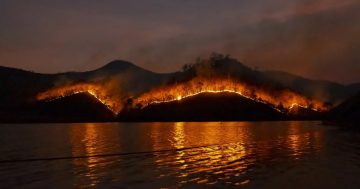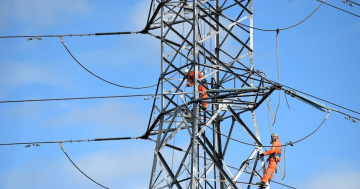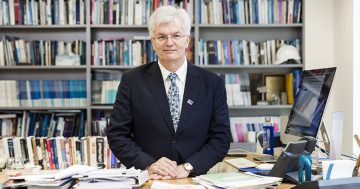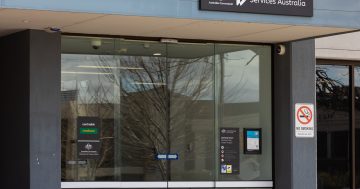 1. This week 10 years ago, Leader of the Earthquake Hazard Program at Geoscience Australia, Dr David Burbidge said the 23 March earthquake that hit the north of South Australia would come under scrutiny to determine the extent of surface deformation in the landscape and its overall impact on the countryside.
1. This week 10 years ago, Leader of the Earthquake Hazard Program at Geoscience Australia, Dr David Burbidge said the 23 March earthquake that hit the north of South Australia would come under scrutiny to determine the extent of surface deformation in the landscape and its overall impact on the countryside.
Dr Burbidge said the magnitude 5.7 earthquake occurred near Ernabella in the State’s remote north and was the largest recorded on mainland Australia in 15 years.
“The information will help seismologists develop a greater understanding of the large earthquake potential in this part of Central Australia and help with the assessment of earthquake hazard across the continent,” Dr Burbidge said.
2. Meanwhile, at a UN General Assembly debate on Disaster Risk Reduction, Minister for Foreign Affairs, Senator Bob Carr praised the value of early warning tsunami systems. Senator Carr told the Assembly the value of investing in regional tsunami early warning systems had been confirmed following recent earthquakes off the coast of Indonesia.
He said Australia’s regional neighbours received an Indian Ocean–wide tsunami warning just seven minutes after the 8.5 magnitude earthquake occurred at 6:38pm Australian Eastern Standard Time on 11 April.
“Early warning systems are critical to saving lives and to reducing the risks and costs of natural disasters caused by tsunamis,” Senator Carr said.
“Our region gets more than its share of natural disasters and early warning systems are now agreed as essential to limiting their impacts.”
3. The Australian and Chinese Governments signed a Memorandum of Understanding (MoU) to strengthen cooperation on delivering infrastructure for both nations.
Minister for Infrastructure and Transport, Anthony Albanese said the MoU would mean closer cooperation on planning of projects, exchanging information on investment opportunities and technical expertise, training and education, joint conferences, as well as joint infrastructure projects in the future.
“Ultimately, this is about creating more jobs, tapping more economic opportunities, and delivering better infrastructure,” Mr Albanese said.
4. Victorian Minister for Health, David Davis opened the new Australian Cancer Research Foundation Centre for Translational Leukaemia Research at the Royal Melbourne Hospital.
Mr Davis said the Centre would speed up the translation of recent world-leading advances in gene discovery into better ways of detecting, treating and preventing leukaemia and lymphoma.
“Translational research is critical as it links clinicians and scientists in improving health outcomes for cancer sufferers,” Mr Davis said.
He said malignant haematological diseases claimed more lives annually than many of the better-known cancers, but specific, targeted treatments remained elusive for most conditions.
5. In South Australia, Minister for Manufacturing, Innovation and Trade, Tom Koutsantonis announced the State’s export performance in the 12 months to February had outpaced all other Australian States.
Mr Koutsantonis said the latest figures from the Australian Bureau of Statistics showed the value of goods exported by South Australia in the period had risen 18 per cent to $11.75 billion.
“South Australia recorded the fastest export growth compared to the rest of the nation,” Mr Koutsantonis said.
“These figures highlight that exports remain a key driver of our State’s economic growth, helping to create jobs and generate income for exporters in the mineral resources and agricultural sectors.”
6. And a decade ago in Western Australia, Minister for Agriculture and Food, Terry Redman said the agricultural potential of two new food-growing sites was being investigated, in the La Grange area in the West Kimberley and the Ord River Irrigation Area (ORIA) in the East.
“There are opportunities to expand production and create more jobs, particularly for regional communities and Traditional Owners in the La Grange area,” Mr Redman said.
He said a study of land and water resources in the ORIA would provide detailed analysis of areas that could support irrigated production.










